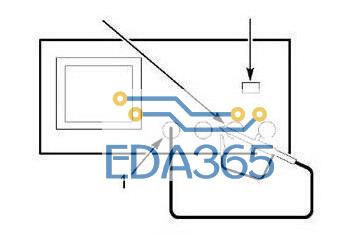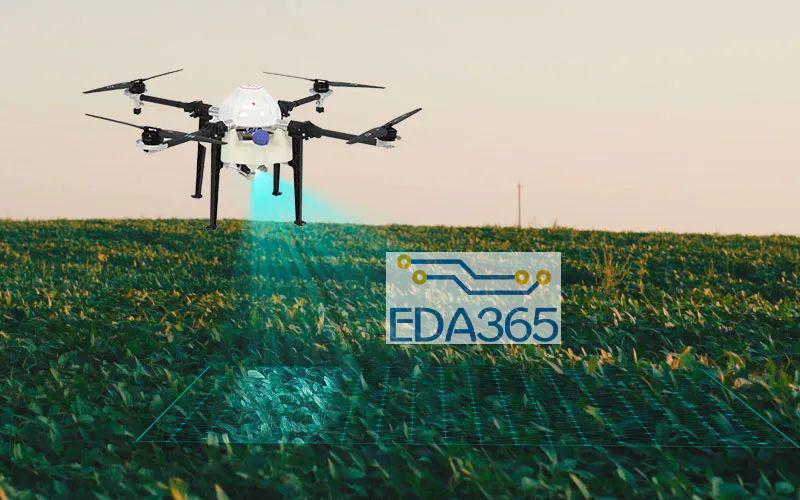| 摘要:钴基合金和铁基合金磁性纳米颗料薄膜和纳米超晶格结构,由于具有较高的矫元力和各向异性能,较小的粒子尺寸分布和能形成“单域”结构等特性,从而成为颇有潜力的高密存储介质。最近几年,人们竞相研究其制备方法,其中主要包括真空淀积法、液相化学合成法和离子注入法等,采用各种措施来提高存储介质的热稳定性和其他磁学性能,并取得巨大进展。 关键词:磁性纳米颗粒薄膜;纳米超晶格结构;高密存储介质;热稳定性;磁学性能1 introductionmagnetic recording has made rapid progress since ibm built the first magnetic hard disk drive(hdd)in 1956,featuring a total storage capacity of 5 mb at a recording density of only 2 kb/in2[1]. magnetic recording wavelength has reduced from primary 1000 μm to current submicrometer length scales[2]. the areal density(da)has increased more than 20 millionfold in modern disk drives and currently almost doubles per annum[1]. nonetheless,21 century being an information century,there are various kinds of information to be processed,transported,and stored,largecapacitystorage technique becomes more and more important and the pursuit of higher areal densities still continues. in order to develop substrates,recording media,gmr(giant magneto resistance)playback heads and recording techniques in the future for recording medium with da of beyond 40 gb/in2,nsic(national storage industry consortium)and src(storage research consortium)organizations were established in america in 1991 and in japan in 1995,respectively[2]. extremely highdensity recording(ehdr)with da beyond 100 gb/in2,even 1 tb/in2 is expected in a few years[1,3]. however,continued growth in density gives rise to socalled“superparamagnetic effect”,which influences the thermal stability of recording systems. therefore,recent studies mainly focus on taking various measures or methods to fabricate recording media for extremely highdensity data storage and to improve the areal density and the thermal stability of these recording media. in this article,we will look into the distance of the progress on magnetic recording from the aspect of recording media.2 ferromagnetic 10000 times over current devices if the ultimate goal of singleparticleperbit data storage can be reached. for singleparticle bits to be written individually,the precipitates must be discrete,magnetically isolated,single domain ferromagnetic nanoparticles that are larger than the superparamagnetic limit and whose coercivity,size,orientation and position can be well controlled[4]. numerous physical and chemical methods have been employed to fabricate ferromagnetic nanoparticles for ehdr media,including sputtering,evaporation,grinding,electrodeposition,solution phase metal salt reduction and neutral organometallic precursor decomposition,etc. qingqing fang et al.[5]prepared platelike particles of srfe12o19 with epitaxially grown fe3o4 overlayer by a wet method,whose magnetic properties can be easily controlled by changing fe2+ content in the reaction. jeanmare bonard et al. produced carbonencapsulated spherical cobalt particles by a modified arc discharge technique,with an average diameter that can be varied between 5 and 45 nm by changing the deposition parameters. a. meldrum et al.[4]prepared co nanoparticles by ion implantation of sapphire. by subsequently implanted with pt to a fluence of about 10% of the original co fluence,the coercivity and the remanence magnetization increases from 150 g and 4% to 114 kg and 46%,respectively. they found that both radiation damage and chemical effects were responsible for high coercivity and the magnetic properties of ferromagnetic co particles in a crystalline host could be controlled by subsequent ion implantation into precipitate. 3magnetic width=243> |
in conclusion,high coercivity and thin recording filmlayers are of great importance for ehdr media. moreover,besides the composition of thin films,small grain sizes,high grain anisotropy and weak intergranular exchange interaction are related to the following factors:whether substrates are smooth or not,what filmlayers structure is on substrates,the fabrications of granular films and ultraclean process,etc.4 selfassembly of nanoparticles into superlattice structures or minute dot arraysthe crystallite size distribution and interparticle spacing have great impact on magnetism,the ideal synthesis must provide control over all these parameters. for vacuum deposition techniques,however,random nucleation in the initial stages of growth typically results in broad distribution of particle sizes,which may be further aggravated by agglomeration during annealing. therefore,solution phase chemical synthesis becomes an increasingly popular method used to form nanoparticles with highly uniform morphologies[13]. moreover,this method is advantageous for mass productivity and cost reduction. s. h. sun et al.[15]prepared monodisperse fept nanoparticles by reduction of pt(acac)2(acac=acetylacetonate)and thermal decomposition of fe(co)5(co=pentacarbonyl)or fecl2 in the presence of oleic acid and oleyl amine stabilizers. the element composition of fept nanoparticle materials is tuned by varying the molar ratio of fe(co)5 or fecl2 and pt(acac)2. the fept particle size can be varied from 3 to 10 nm by first growing 3 nm monodisperse seed particles in situ and then adding more reagents to enlarge the existing seeds to the desired size. when the fept colloids are spread on a substrate and the carrier solvent is allowed to evaporate slowly,fept nanoparticle superlattices are formed. the particles are monodisperse with σ≤5% in diameter and readily selfassemble into threedimensional(3d)superlattices(figure 4). high temperature annealing(t>500 ℃)and an increased number of layers lead to an increase in the film coercivity. for 3 layer/4 nm particle thin films(deposited from fecl2 and annealed at 800 ℃ for 5 min in n2),coercivity as high as 17 koe can be achieved[14]. david e. nikles et al.[16]have extended the synthesis to prepare fecopt,feptag,and feptcu nanoparticles. they found that addition of small amounts of co to fept lowers the hc of the films after the particles have been transformed to l10 phase and addition of ag to fept lowered the temperature required for phase transformation from the fcc to the l10 phase. ag phase was separated from the fept lattice,leaving behind vacancies that allowed the fe and pt atoms to move their tetragonal lattice positions. amar kumbhar et al.[17]synthesized co and copt alloy nanoparticles by reducing aqueous metallic salts confined in the polar regions of the reverse micelle of cetytrimethlyl bromide(ctab)with sodium borohydride. these particles are further coated with gold by reducing aqueous gold salts with borohydride. tem image showed that the goldcoated copt3 nanopaticles were uniform in size(average size about 20 nm)and were spherical in shape. they found that the particles had a single domain structure and were superparamagnetic at room temperature. annealing of the copt/au samples showed an increase in coercivity,which is especially noticeable at higher temperature:hc=500 oe versus 25 oe at 300 k. it may be used as a giant magnetoresistive material. s. p. li et al.[18]obtained 2d co magnetic dots array by deposition of magnetic films on welldefined colloid surfaces(here sio2),exhibiting a coercive field at room temperature. the size of magnetic dots results from the size of silica spheres. the system looks promising as magnetic recording. j. a. barnard et al.[19]used the nanochannels of a porous substrate(al)to fabricate nanostructure magnetic networks. fe,co and co035fe065 networks are obtained in this way,by deposition of thin films on the pore surfaces of alumina wafers. such networks structures exhibit a strong enhancement of their room temperature coercivity,which have many interesting properties for ehdr. explanations of the drastic enhancement of coercivity are based on the obstruction of wall motions due to the pores and a significant shape anisotropy. it is expected that these organized magnetic media might contribute to an effort to reach magnetic recording density between 100 gb/in2 and 1 tb/in2.
5 conclusioncobased and febased nanoparticle thin films and superlattice structures or minute dots array have higher coercivity and magnetocrystalline anisotropy,smaller grain sizes and size distribution,weaker intergranular exchange interactions,which are of great importance for high density recording media with areal density beyond 100 gb/in2 even to 1 tb/in2. many techniques have been explored to fabricate them,but some of these methods are to be further optimized for mass production and cost reduction of ehdr media.references:[1]andreas m,kentaro t,et al. magnetic recording:advancing into the future[j]. j phys d,appl phys,2002,35:r157-r167.[2]干福熹,沈德芳,等. 信息材料[m]. 天津:天津大学出版社,2002.11[3]yu m,liu y,et al. nanostructure and magnetic properties of composite copt:c films for extremely highdensity recording[j]. j appl phys,2000,87(9):6959-6961. [4]meldrum a,boatner l a,et al. nanocomposites formed by ion implantation:recent developments and future opportunities[j]. nuclear instruments and methods in physics research,2001,b 178:7-16.[5]fang q q,et al. new modified srferrite particles for hign density magnetic recording[j]. j appl phys,1999,85:1667.[6]xu y f,et al. magnetic and structural properties of hcpcocrptc granular media for high density recording[j]. j appl phys,2000,88:7234.[7]christodoulides i a,huang y,et al. copt and fept thin films for high density recording media[j]. j appl phys,2000,87(9):6938-6940.[8]wang j p,tan l p,et al. co alloy longitudinal thin film media with ultrahigh copercivity[j]. j appl phys,2000,87(9):6352-6355.[9]shen b g,cheng z h,zhang s y. j appl phys,1999,85(8):2787.[10]paik c r,et al. magnetic properties and noise characteristics of high coercivity cocrptb/cr media[j]. ieee trans magn,1992 mag28:3084.[11]peng w,et al. perpendicular magnetic recording thin film media using co/pd superlattice on ultrathin indiumtinoxide seed layers[j]. j appl phys,2000,87:6358.[12]lee y h,et al. the role of amorphous ni50p50 precoating layer in cocrptta thin film media[j]. j appl phys,2000,87:6346.[13]hirayama y,honda y,et al. annealing effects on recording characteristics of cocralloy perpendicular magnetic recording media[j]. j appl phys,2000,87(9):6890-6892. [14]sakurai k s,et al. effects of surface cleanness on the magnetic properties of conicr and cocrta thin film media fabricated using an ultraclean sputtering process[j]. j magn magn,1996,155:172.[15]sun s h,murry c b,et al. monodisperse fept nanoparticles and ferromagnetic fept nanocrystal superlattices[j]. science,1989,287:5460.[16]nikles d e,et al. the synthesis,selfassembly,phase transformation and magnetic properties of l10 nanoparticles[j]. j appl phys,2000,87.[17]kumbhar a,spinu l,et al. magnetic properties of cobalt and cobaltplatinum alloy nanoparticles synthesized via microemulsion technique[j]. ieee trans magn,2001,37(4):2216-2218.[18]li s p,et al. magnetic nanoscale dots on colloid crystal surfaces[j]. appl phys lett,2000,76:748.[19]barnard j a,et al. high coercivity nanostrcutured networks[j]. j appl phys,1997,81:5467.biography:shi liwei(1979-),male,was born in shandong province,m.s. of institute of semiconductor shandong normal university,researching in the fabrication of cobased and febased alloy magnetic nanoparticles thin films and sibased lightemitting materials.
本文摘自《微纳电子技术》
『本文转载自网络,版权归原作者所有,如有侵权请联系删除』
 热门文章
更多
热门文章
更多









